| Umělec 1999/1 >> Asian Explosive Compound (Buddha’s Footprint and Contemporary Thai Art) | Просмотр всех номеров | ||||||||||||
|
|||||||||||||
Asian Explosive Compound (Buddha’s Footprint and Contemporary Thai Art)Umělec 1999/101.01.1999 Miloš Vojtěchovský | thailand | en cs |
|||||||||||||
|
"A legend says that ages ago Buddha allowed an eager artist to copy his silhouette after a shadow in the sand. Noticing that the artist was unable to truly capture his features, Buddha wrote a prayer in the sand and wiped off the drawing. But when Gauthama laid on his death bed (or whatever they used in India at that time) and his devoted student Ananda asked him with tears in his eyes whether his followers might be reminding their Master with something material, he first allowed a pilgrimage to Holy Places where he conquered Evil and Ignorance. If this was not enough, it was allowed to pick what was left from the Master’s bodily envelope after cremation (remains - sariradhatu) and build hills, elevations, memorials made of clay or bricks for them. As symbols, they will bless and falicitate blessed pilgrims. Art used to serve as a substitute for the feeble-minded, for those who are incapable of thinking in subliminal notions and architecture, according to the original Writing, and as such is redundant for the intellectual ones.
The number of intellectuals, however, is pitiful, so the countries where Buddhism is practiced are rich with tiny shining alters with a golden statue on every step plus hills and temples where the saint’s remains are kept (paribhogacetiya) and other conic structures which do not keep even a tooth or nail of Buddha but remind of them. Those are part of a lower group called uddesikacetiya. It is important to say that uddesikacetiyas include even trees, Buddha’s footprint, a place reminding a territory where Buddha’s footprint may be found, and in fact even all fauna and flora as those are sure to be somehow genealogically connected with the fauna and flora of Buddha’s period. Thus originally, holiness used to be evenly distributed between nature and culture and Buddhists were able to pray to their golden shining, resting and smiling god both in ashrams and at the roots of trees decorated with colorful ribbons. While the number of blinking alters hiding the figure of god is surprising in modern Thai city or countryside, the number of holy trees is decreasing rapidly. Allegedly, Bangkok is a city with the warmest average climate in the world. In addition, it is a city (after Beijing and Tokyo) that enjoys the world’s worst air quality, covering the gigantic metropolitan area with constant and alarming level of pollution caused by car exhumes and other achievements of civilization. You notice this instantly as you travel from the airport towards what used to be the village of Bang where the Siamese see moved from the destroyed Ayutahy. Almost at any time of the day you either sweat or freeze (depending on the fact whether your car is air-conditioned) in a slowly moving never-ending flow of cars, buses, tok-tok’s, on intersections directed by police officers wearing white wimples protecting them from traffic pollution. The city of more than 6 million is dragging out like a metastasis from horizon to skyline occupying at least a hundred kilometers of chaotic and hungus metropolis, rising and decaying along the roads and highways, continuously changing into industrial wasteland, biting off the remains of forests, rice fields and villages which have during the past 20 years become part of the city. Somewhere in front is where the historical center is located, complete with royal palace, ancient monasteries, river, market places, slightly dusty greenery and gold-plated and mirror-inlayed spiky towers. But it seems that you will never be able to cut through this never-ending suburbia combining sort of unspecified low buildings, post-modern department stores and gigantic concrete skyscrapers, sticking up all around. Some of them are actually completed while some seem to be owned by a less lucky bankrupt investor and look like a skeleton of a frozen dinosaur. From time to time you pass an entrance into a walled-off area, or campus, owned by an international (mostly American or west European) corporation, an employee oasis whose inhabitants enjoy the luxury of a lake, a park, a sports complex and a shopping mall. It is, however, a sort of a hybrid countryside of a non-town in the middle of anarchistic exuberance of the liberal capitalist production cycle - consumerism living in symbiosis with the decay of traditional, post-colonial and caste-layered Asian social structure. A European used to changes and degradation of large cities over the past few decades and wondering about such phenomena as Prague’s South End housing complex, the city of Litvínov and Communist buildings in Kiev, cannot help inquiring while visiting Asian megacities of Singapore, Bangkok and Kuala Lumpur about his (i.e. our) part of the blame for conception and degeneration of Asian city into a form of never-ending and disconsolate housing complexes. In many Asian countries, modernization was at first received as benefaction, a welcome import of European liberalism and democracy and was intended to be a tool used to strengthen awareness of national identity, ancient religious and ideological structures. However, since the 1990s it was increasingly accompanied by a feeling of fast decay of the value system and cultural patterns. The modernism and technological revolution project was based on the experience with colonial and mostly imperial heritage in many South East Asian countries. This combination caused both inclination to totalitarianism and the birth of explosive compound of religious, racial and political problems which currently trouble the continent. Despite all this, Bangkok feels quite calm, the citizens are mostly smiling, though it is often hard to believe and it is very hard to trace any sign of aggression and tension in streets filled with people. The awakening to a crisis and the need to solve it are apparent from the activities of many independent political, social, ecological and artistic groups. Thailand’s relatively tolerant social system offers a space and possibilities to which other more rigorous countries such as Malaysia, Indonesia, let alone Burma, Vietnam and Laos, would respond in a hostile manner, perhaps followed by a harsh strike. Although Siam has never been a direct European or American colony (which is exceptional in the history of this continent), it appears that the influence of western civilization and technology corroded not only traditional social and cultural values but brought about this concrete jungle phantom which Rem Koolhas once called the City of Exacerbated Differences (COED). They are not, he claims, “a methodical creation of ideals but exploitation of chances, tragedies and imperfections“. The truth is that most tourists do not even notice this phenomenon and head directly to the noisy and pitoresque downtown, packed Chinatown streets, Buddhist temples, shopping center where you may experience unbelievable tropical exuberance of forms, smells and colors. As pursuant as shocking are also contrasting contours of the organism of Thai culture in the city - harmonic natural divine order, ingenious activity and finesse juxtaposed to pursuant symptoms of decay, incorporated into new forms of commerce, pollution, noise, chaos, speed and kitsch in modern suburbia. Taking into account the gigantic scale and mutual interconnection of the entire Bangkok mix of historical, social, religious, political, economic and God knows which factors, it is sure that local authorities have hard time looking for solutions and cures. Additionally, the economic crises which recently hit South East Asia (and which did not miss liberal Thai parliamentary monarchy and its relatively stable economy) is drawing a constant flow of immigrants from poor Southern parts of the country to Bangkok, causing the city to thrive with poor suburban slums. Sumet Jumsai, a social urbanism expert based in Bangkok, suggests the apocalyptic future in the following points: more than 60% of the world’s population will live in cities during the 21st Century; out of 23 megacities with over 15 million people, 15 will be in Asia, tossed with fast speed of changes and geometrical rise of population; villages will be losing their inhabitants while cities will turn into gigantic units. The agglomeration spanning between the cities of Tokyo and Osaka is estimated to be inhabited by 50 million people. Other sources state that 80 percent of new high-rises in Shanghai are empty, the same is the case of similar buildings built by Hong Kong companies in Thailand’s capital while half of the immigrants live on the streets. The relation between the progress of urbanization and nature may be directly experienced through climate changes. The overall temperature is on the rise as the natural protection layer of forests slowly but surely gives way to machines owned by natural resource corporations. According to the Herald Tribune, Asia has lost half of the original forests. Remains of Thailand’s tropical forests include several national parks hiding a few lonely Malaysian tigers, groups of monkeys and other mostly endangered species. Elephants, the Siamese kingdom’s sacred symbol, had to change their qualification from working in forests to tourist entertainment. I’ve heard that due to the lack of other activities, they also play soccer. Hunters of wild elephants, living by the Thai-Cambodian border, hope they will be able to set off to Cambodian jungle for a looting trip as soon as the situation there calms down. Because of the permanent war, Cambodia has so far been saved from intensive natural resource output just as Laos’ Vientiang has maintained a peaceful colonial appearance from the 1960s. Obviously, local artists cannot complain about lack of themes for their art and work with social context. Chaiyot Chandratina, professor at the Chiang Mai Academy, claims that contemporary art suffers from loss of values in social contact and transforms itself into mere production and entertainment, „the art scene is mostly unable to face up to everyday reality“. The drastic changes, shift of accent and social role of the artist and the concept of art are in conflict with traditional non-conflicting and servile perception based more on use and religious role, according to Montien Boonma, professor at the University of Bangkok. Commercial exploitation of popular and entertainment-oriented art production is also very strong and the primary program of contemporary Thai art is searching for possibilities to address wider audience. There are just a few galleries in Thailand willing to show a bit more controversial and hard-to-sell works, therefore the artists here, too, start autonomous and non-institutionalized projects. Examples include the Project 66 group and projects of the alternative exhibition space called the Concrete House, an association of mainly performers and people involved in video and new media. In addition, Chitti Kasemkitvana, organizer of the association, has been engaged in the Museums on the Move project and the tactics of art’s intervention into urban spaces. Since 1995, the second largest city of Chiang Mai has hosted several international events for public space called Social Installations. A number of artists from Asia have taken part in the project, as well as European and American artists. At the end of last year, a similar event took place also in Bangkok, directly in the context of the historical center with works by over 70 Thai, Singaporean, Vietnamese and South Korean artists. In addition, exhibitions of contemporary Thai art are becoming more and more frequent in the USA and Western Europe. Originally looked at with distrust, together with the Japanese, Chinese, Malaysians and South Koreans, Asian-exotic esthetics and poetics are becoming part of the awareness of so called “global visual scene“ which is losing its “white“ exclusiveness. The position and feelings of contemporary Asian art toward the current hegemony of Euro-American patented answer to the questions ‘What is contemporary art anyway?‘ is in some respect similar to the feeling of being misunderstood as experienced in Central and Eastern Europe. The thesis of one global artistic language implying the problem with dialects in confrontation with spelling rules created and set in art centers, museums, and galleries create a tension and power field among the “correct“, “similar“ and “wrong“ response. The Western Modern Art Project, applied and imposed for centuries upon the fundaments of other, often very remote cultures, is necessarily a subject of hybridization process, creating an effect of „transmutation“ and birth of new „bastard“ forms just like Euroart or Multiculti. The West’s self-centered flirting with art of other cultures has been mostly based on disdain and unwillingness to understand autonomy, identity and integrity of so called “exotic“, or “primitive“ cultures. What the Paris, Berlin and London based egoistic pre-modernists, modernists and post-modernists called „primitivism“ was nothing but a paraphrase, caricature and tabulation of unknown art forms and contents, or sublimation of our own “atavistic“ features. On the other hand, “mimetic reactivity“ was (and still is) a symptom of many non-European cultures competing in taking over and imitating patters, means and tools produced and diligently distributed by the West. The ability to defend oneself depends on many elements: the energetic center of Bangkok assimilated foreign influences and chewed up the influx of technology and tourism into a new quality. The suburbia, quickly taking over helpless village, turned into a wasteland and appearance of the Asian concrete urban cross-breed represents an example of sinister meeting of tradition and modernism. Concoction and copies of European academism and post-academism, the shocked visitor stumbles upon in distant museums and galleries (as those are both post-marxist and post-colonial countries), is sad and often grotesque example of multicultural misunderstanding. Originality, independence and integrity of thought and art making is a value that is scarce everywhere. Perhaps it really is just the business of the sacred - parinibbána. P.S. This article does not pretend to inform the reader on contemporary Thai art nor to evaluate it because the author knows nothing about it. "
01.01.1999
Рекомендуемые статьи
|
|||||||||||||
|
04.02.2020 10:17
Letošní 50. ročník Art Basel přilákal celkem 93 000 návštěvníků a sběratelů z 80 zemí světa. 290 prémiových galerií představilo umělecká díla od počátku 20. století až po současnost. Hlavní sektor přehlídky, tradičně v prvním patře výstavního prostoru, představil 232 předních galerií z celého světa nabízející umění nejvyšší kvality. Veletrh ukázal vzestupný trend prodeje prostřednictvím galerií jak soukromým sbírkám, tak i institucím. Kromě hlavního veletrhu stály za návštěvu i ty přidružené: Volta, Liste a Photo Basel, k tomu doprovodné programy a výstavy v místních institucích, které kvalitou daleko přesahují hranice města tj. Kunsthalle Basel, Kunstmuseum, Tinguely muzeum nebo Fondation Beyeler.
|















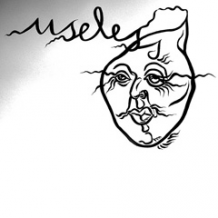






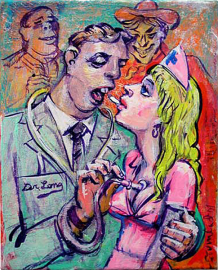




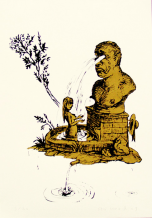
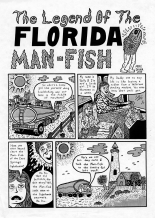
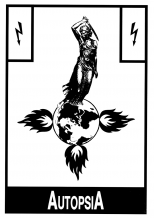
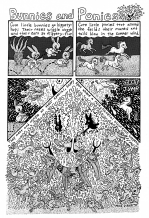


 New book by I.M.Jirous in English at our online bookshop.
New book by I.M.Jirous in English at our online bookshop.
Комментарии
Статья не была прокомментированаДобавить новый комментарий